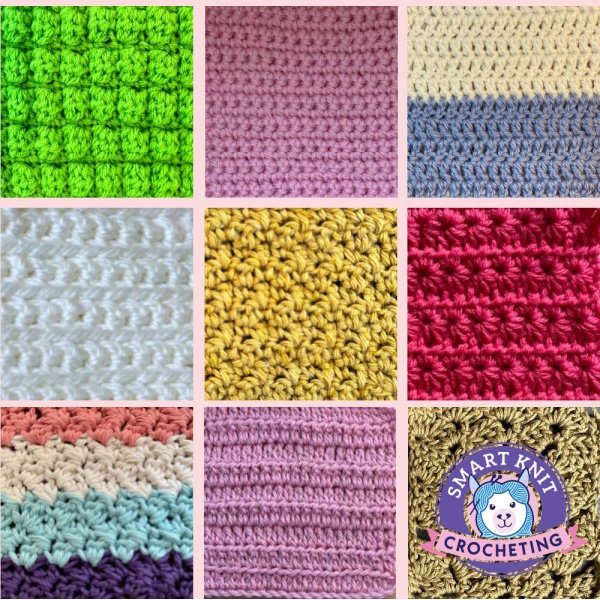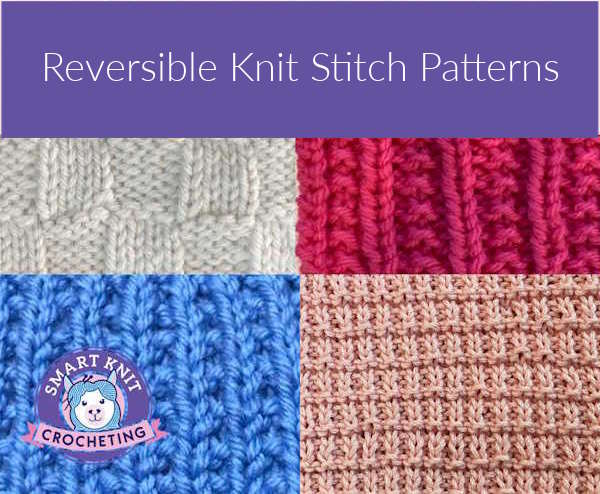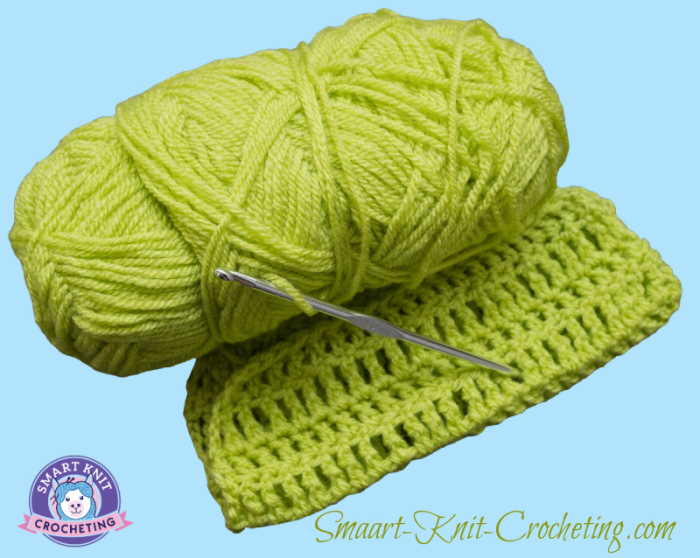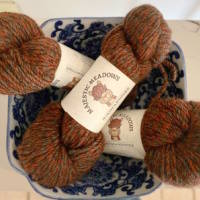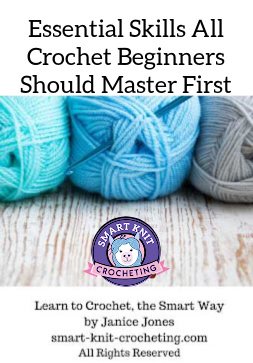- Home
- How to Knit: Basics
- Cable Cast-On in Knitting
How to Do the Cable Cast-On in Knitting: Step-by-Step Tutorial
Cable Cast On Method By Janice Jones, Updated November 2025
The cable cast-on method is a sturdy way to start your knitting. It creates a firm, attractive edge that doesn’t roll and works beautifully for both flat and circular knitting. While similar to the knitted cast-on, this method creates a tighter, more defined edge, perfect for adding structure to borders and textured stitch patterns.
I first encountered this method when I needed to make some small buttonholes for a cardigan I was knitting. With any new technique, I immediately thought it would not be easy. Luckily, it's easier than I imagined.
 Cable Cast On Showing Right Side
Cable Cast On Showing Right Side Cable Cast On Showing Wrong Side
Cable Cast On Showing Wrong SideSkill Level
Easy/Beginner: This cast on method is fine for anyone who knows how to make the knit stitch.
Skills Needed
Supplies
To practice this technique, you will need some yarn and a pair of knitting needles appropriate for the yarn you are using. I recommend that you start with a smooth worsted-weight yarn in a light color so you can see what you are doing.
When to Use the Cable Cast On
If you are working on a project, the pattern may recommend using the cable cast-on. Otherwise, here are a few options:
- When you need a sturdy, non-stretchy edge, such as making dishcloths
- For borders, button bands, and structured garments
- Great for adding stitches mid-project as well
- Use it when you want a more decorative edge than what you can get with the longtail cast-on method
Step-by-Step Instructions
Step One: Make a Slip Knot
 1. Make a slip knot and place it on your left needle.
1. Make a slip knot and place it on your left needle.Make a slip knot and place it on your left needle. This counts as your first stitch.
Step Two: Insert Your Needle
 2. Insert your needle as if you were going to make a knit stitch, but do not slide the stitch off of the needle.
2. Insert your needle as if you were going to make a knit stitch, but do not slide the stitch off of the needle.Insert the right needle knitwise into the stitch on the left needle, just like you were beginning to make a knit stitch.
Wrap the yarn around the right needle and pull through a loop as if knitting a stitch, but do not slip the stitch off the needle.
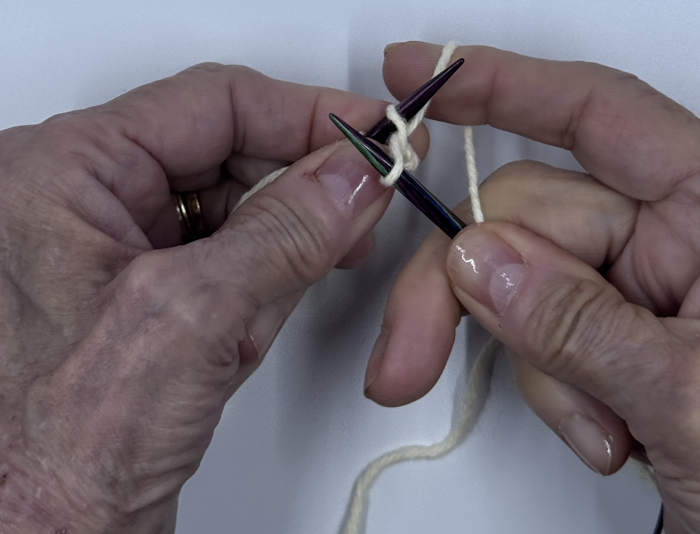 3. Pull slightly on the stitch, twist, and place back onto the left needle.
3. Pull slightly on the stitch, twist, and place back onto the left needle.Step Four: Transfer the Loop to the Left Needle
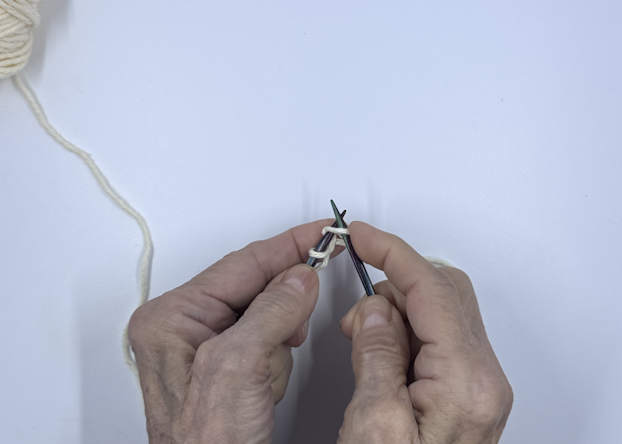 4. You now have your second stitch on the left needle.
4. You now have your second stitch on the left needle.Pull up slightly on this loop and then place it onto the left needle. Once it is on the needle, you can tighten it slightly.
Step Five: Next Stitch
 5. Insert the right needle between the two stitches on the left needle. Knit as you usually would without removing the stitch. Then, pull out slightly, twist, and place the stitch back onto the left needle. Tighten slightly.
5. Insert the right needle between the two stitches on the left needle. Knit as you usually would without removing the stitch. Then, pull out slightly, twist, and place the stitch back onto the left needle. Tighten slightly.Insert the right needle between the two stitches on the left needle. Wrap the yarn around the needle and pull through, just as you would with any other knit stitch. Place it on your left needle.
Repeat
Continue adding stitches but inserting your right needle between the top two stitches closest to the tip, wraping new yarn around the right needle, pulling through, and then transfering knitwise onto the left needle. (See steps Five through Seven)
Video Tutorial
I found this video that might make this type of cast on method easier to understand.

Tips
- Work the stitches loosely so you can fit the needle between stitches.
- Tighten a bit after transfering the stitch onto the left needles.
- Be careful not to split the yarn when making stitches.
- If you cast on a large number of stitches, use stitch markers to count off 10 or 20 stitches. That will help when you count at the end of your cast on.
Frequently Asked Questions
What’s the difference between the cable cast-on and the knitted cast-on?
What’s the difference between the cable cast-on and the knitted cast-on?
Both begin with a knit stitch, but the cable cast-on inserts the needle between two stitches, while the knitted cast-on inserts into the stitch itself. Cable cast-on gives a firmer edge. Knitted cast-ons are a bit more elastic.
Is the cable cast-on stretchy?
Is the cable cast-on stretchy?
No, but it has minimal stretch, making it great for edges that should hold their shape.
Can I use the cable cast-on in the round?
Can I use the cable cast-on in the round?
Yes! It's excellent for casting on in the round. Just be sure your stitches aren't twisted before joining.
Does the cable cast-on count the slip knot as a stitch?
Does the cable cast-on count the slip knot as a stitch?
Yes, the slip knot is your first stitch unless your pattern says otherwise.


